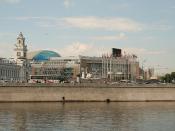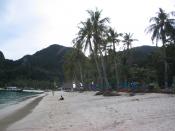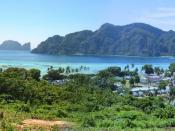Introduction
Rapid environmental changes are easy to see nowadays when we inquire into the influences of tourism which involve human activities on a large scale, such as transportation, accommodation, food services, and retail activities. In other words, tourism can either damage or benefit the natural environment. However, natural conditions are the basis for most forms of tourism (Stephen F. Witt Lui Moutinho 1994) and its impacts may also alter the attractive features of a site. In a word, good quality of natural environment is an asset to tourism, but could be damaged by inappropriate tourist activities. In this essay, I will demonstrate the close relationship between both by using some examples of facts and people's action as an illustration of the negative and positive impacts of both sides on each other.
The positive impact of environment on tourist industry
The natural environment, which is an important attraction for tourists (Orams M.B
in Vickerman, 1995), offers precious resources with their positive effects on tourism. In the case of Hawaii, for example, there are active volcanoes, lava flows, tropical rain forests, beautiful beaches, sugar cane fields, pineapple plantations and historic sites. These natural resources attract about 7 million tourists each year (http://www.usatourist.com). It was reported that Maui, Kaua'i, and the Big Island ranked among the top ten "World's Best" Islands in Travel+Leisure magazine's "World's Best" Readers Poll for 2005 (Hawaii Visitors & Convention Bureau 2005). Another example is beaches in UK. Researchers from eight European countries who spent three years estimating the impacts of extreme climate change forecasted that Britain could become the beach holiday capital of Europe by 2025 at the end of the G8 summit (David Adam 2005). A survey of water quality made by the Marine Conservation Society in mid season (from May to August) 2005 showed that ninety-four...


